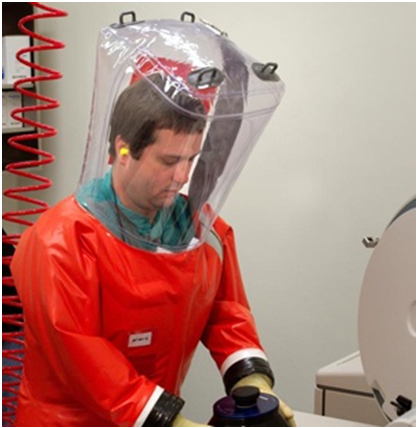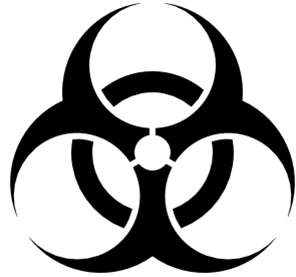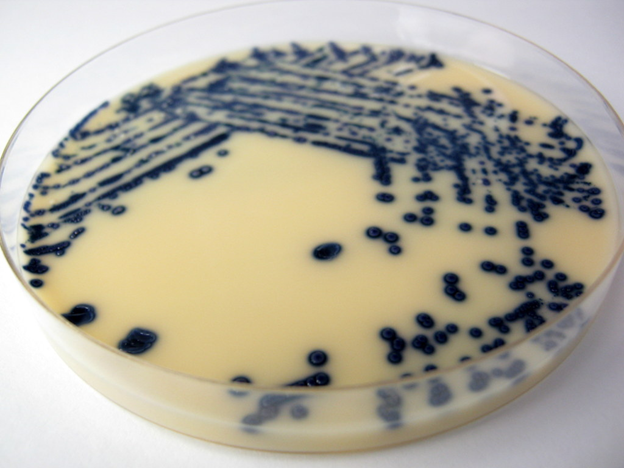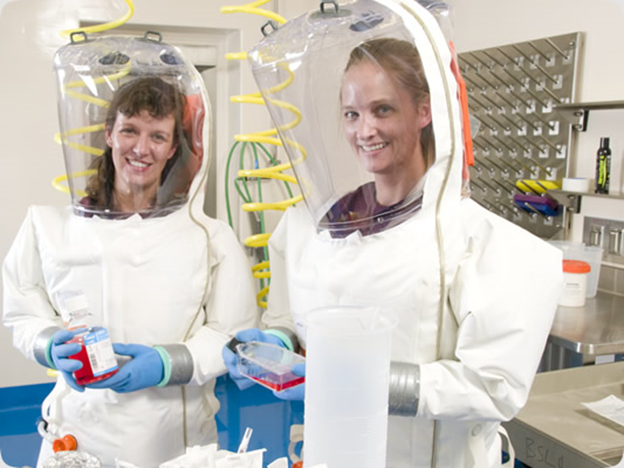Chemical agents and biological agents are very exceptional from other conventional warfare tools including nuclear/atomic weapons in that they are usually invisible and they produce delayed effects in victims of biologic and chemical attack. The usage of these weapons of mass destruction in formal warfare is unlikely especially now that the world is seriously yearning for a total disarmament of nations and organizations in possession of them.
Nevertheless, biological/chemical weapons is likely to be in the hands of terrorist groups, and this portend a grave danger for the general public when they are put to use by extremist groups or organizations.
The clinical microbiology laboratory is very instrumental in the authenticity of a biological weapon attack because it is scientists in this laboratory that will be saddled with the sole responsibility of detecting and identifying the particular biological agent that was used in the bioterrorism attack so that appropriate measures can be taken to contain its spread in a defined human or animal population.
But it is critical that scientists in such laboratories (i.e. Biological Safety Level-4 [BL4] laboratory) observe all the precautionary measures and wear the required protective gowns or wears so as to avoid becoming infected by the pathogens they are working with (Figure 1). The laboratory is also responsible for sending out reliable information to the general public through laid down authorities as to the agents involved, their pathogenicity and how it can be contained.
The development and propagation of biological agents is a “Secret Science” per say, and scientists cannot be left in the vacuum when such advancements are being fostered by those in need of a biological weapon. Several reasons abound which motivate rogue nations and terrorists organizations to develop biological weapons of mass destruction. Some are motivated by ideology while others are motivated by financial incentives and the quest for military supremacy.
But how do scientists, who are educated to help mankind justify the use of their privileged knowledge for the explicit goal of killing civilians en masse? This is a serious question to be answered by scientist’s world over if we are to effectively contain the threats of bioterrorism today, and restrain scientists from helping rogue nations and terrorists organizations from embarking on such anti-human ventures.

Figure 1. A scientist working in a Biological Safety Level-4 (BL4) laboratory.
BL4 laboratory provides the highest level of protection against microbial contamination while ensuring that the microbe being investigated is appropriately contained and does not escape to the outside environment. The worker is enclosed in a laboratory suit that covers the whole body and provides air supply (arrowhead). Biological agents handled in BL4 are likely to cause lethal human disease for which immediate preventive and therapeutic intervention are not typically available.
In 2002, the 1972 Biological and Toxic Weapons Convention (BWC) was rationalized and governments of nations gave their support to continue in the surveillance against biological and chemical weapon threats in order to contain possible development of biological agents for mass destruction.
The recent move by the UN Disarmament Team to rid Syria of all her stockpiles of chemical weapons is a step in the right direction which will go a long way in preventing the use of such agents against innocent and unarmed civilians. The development and distribution of potent vaccines against some known biological agents for bioterrorism should be sustained as preparedness measure against future attack.
Global norms against the use of chemical and biological agents as weapons of mass destruction should be strengthened because if the international community unites against bioterrorism, it will be difficult for terrorist organizations and rogue nations to go into their development and usage. International biosecurity laws and efforts should be strengthened and enforced when necessary. Global preparedness and response to bioterrorism should be strengthened in order to minimize the number of casualties in such events even though such strategy may not prevent a chemical or biological weapon attack.
BWC should do more of oversight functions to contain the development and proliferation of chemical and biological warheads. Tougher and stringent measures should be used by the international community against nations nursing the ambitions of a chemical or biological attack including scientists and research organizations that abuse the privileges of scientific and biomedical research in their domains.
Advancements in biomedical research and technology should be for the sole purpose of improving the health and living standards of humanity and not otherwise. Thus, nations and private organizations suspected of using their scientific prowess to develop weapons of mass destruction should be closely monitored by BWC and disarmed in order to ensure compliance to international against the development and use of chemical and biological agents against humanity.
Such measures will dissuade other nations, research organizations and terrorist groups with like ambitions from embarking on bioterrorism and biowarfare. The destruction of about 1,000 tonnes of chemical weapons (comprising of sarin and mustard gas) in Syria by the Organization for the Prohibition of Chemical Weapons following the usage of these agents on civilian populations is commendable. Such measures should be sustained especially in nations with possession of such weapons of mass destruction in order to make the world a better place for all.
Though the event of a chemical and biological attack that is pandemic in form is not foreseeable at the moment, the growing spade of terrorism across the globe coupled with the possibility of terrorist organization in developing weapons of mass destruction should keep world leaders, public health personnel and counterterrorism teams more united and always at alert in order to ensure speedy detection and distribution of relief assistances to affected individuals.
The biohazard sign should always be placed at the door posts of Biological Safety Level-4 (BL4) laboratories and other reference laboratories where highly infectious organisms are kept and manipulated so that non-laboratory personnel can take the appropriate caution on approaching such sites (Figure 2).

Medical personnel and those saddled with the responsibility of treating and rendering assistance to affected individuals should ensure proper protection of themselves (by wearing protective gas mask) from possible contamination and spread of the pandemic. The M-40/M-42 protective mask provides protection from all types of known chemical and biological agents in the event of a chemical or biologic attack (Figure 3).

They should be worn continually when visiting sites of chemical or biologic attack until the contaminated zones have been properly decontaminated. Early detection, timely intelligence report to prevent terrorists from using biological/chemical weapons and early treatment and vaccination of affected individuals in the occurrence of bioterrorism is critical to minimizing the number of casualties that may arise from such callous activity.
Finally, there is need to educate the general public and get them to be aware about bioterrorism, and how they are expected to react in such episodes. In the event of any serious outbreak of infectious diseases that is of public health interest, microbiologists and public health specialists should always endeavour to wear the appropriate protective units or gowns when working in the field or laboratory.
The biohazard symbol shows that high-profile laboratory work or experimentation is on-going in the area where such sign is posted; and this call for caution to all passer-by to beware and take precaution to avoid any form of contamination with the working environment. The symbol also indicates that you are approaching an environment where harmful microorganisms or other biologically- or chemically-harmful materials and/or samples are being handled.
The M-40/M-42 protective mask or hood and its likes help to prevent the inhalation of microbial spores, nuclear particles and other chemical substances released into the atmosphere to kill or cause disease in a given human population. Generally, the mask provides respiratory, eye and face protection against chemical, biological, radioactive fallouts and other battlefields contaminants.
References
Aschengrau A and Seage G.R (2013). Essentials of Epidemiology in Public Health. Third edition. Jones and Bartleh Learning,
Aschengrau, A., & G. R. Seage III. (2009). Essentials of Epidemiology in Public Health. Boston: Jones and Bartlett Publishers.
Castillo-Salgado C (2010). Trends and directions of global public health surveillance. Epidemiol Rev, 32:93–109.
Centers for Disease Control and National Institutes of Health (1999). Biosafety in Microbiological and Biomedical Laboratories, 4th edn, Washington DC: CDC.
Guillemin J (2006). Scientists and the history of biological weapons. European Molecular Biology Organization (EMBO) Reports, Vol 7, Special Issue: S45-S49.
Halliday JE, Meredith AL, Knobel DL, Shaw DJ, Bronsvoort BMC, Cleaveland S (2007). A framework for evaluating animals as sentinels for infectious disease surveillance. J R Soc Interface, 4:973–984.
Nelson K.E and Williams C (2013). Infectious Disease Epidemiology: Theory and Practice. Third edition. Jones and Bartleh Learning.
Porta M (2008). A dictionary of epidemiology. 5th edition. New York: Oxford University Press.
Rothman K.J and Greenland S (1998). Modern epidemiology, 2nd edition. Philadelphia: Lippincott-Raven.
Rothman K.J, Greenland S and Lash T.L (2011). Modern Epidemiology. Third edition. Lippincott Williams and Wilkins, Philadelphia, PA, USA.
Discover more from Microbiology Class
Subscribe to get the latest posts sent to your email.




